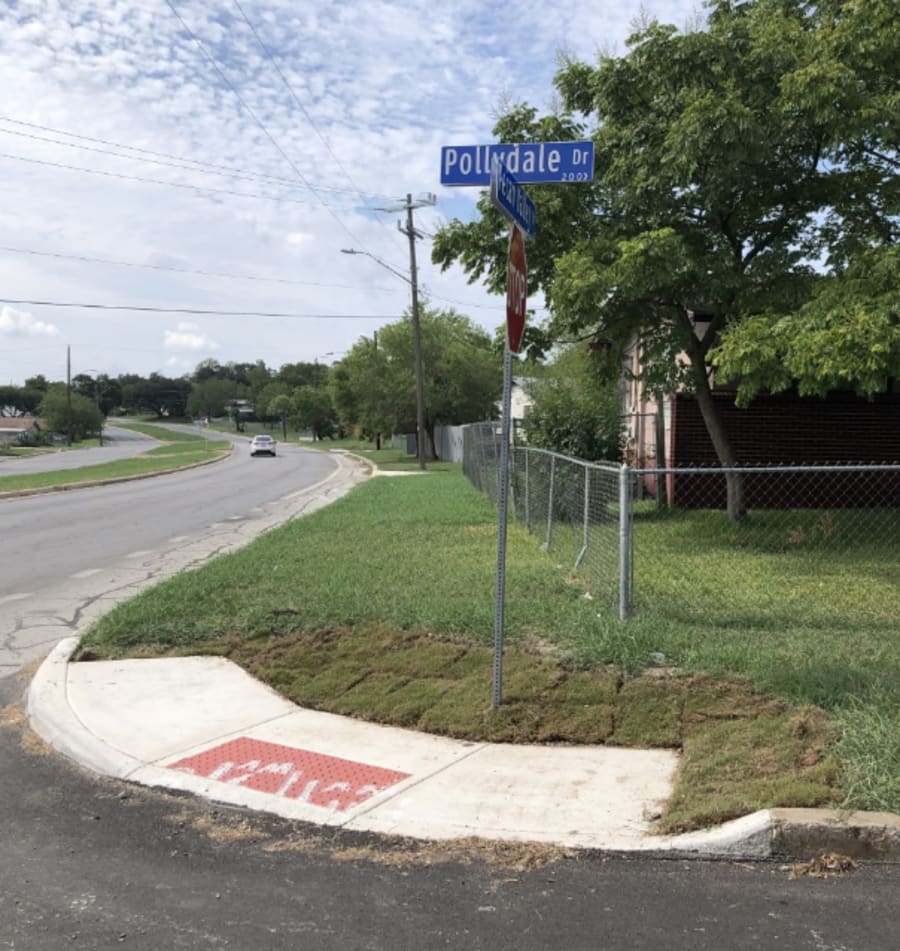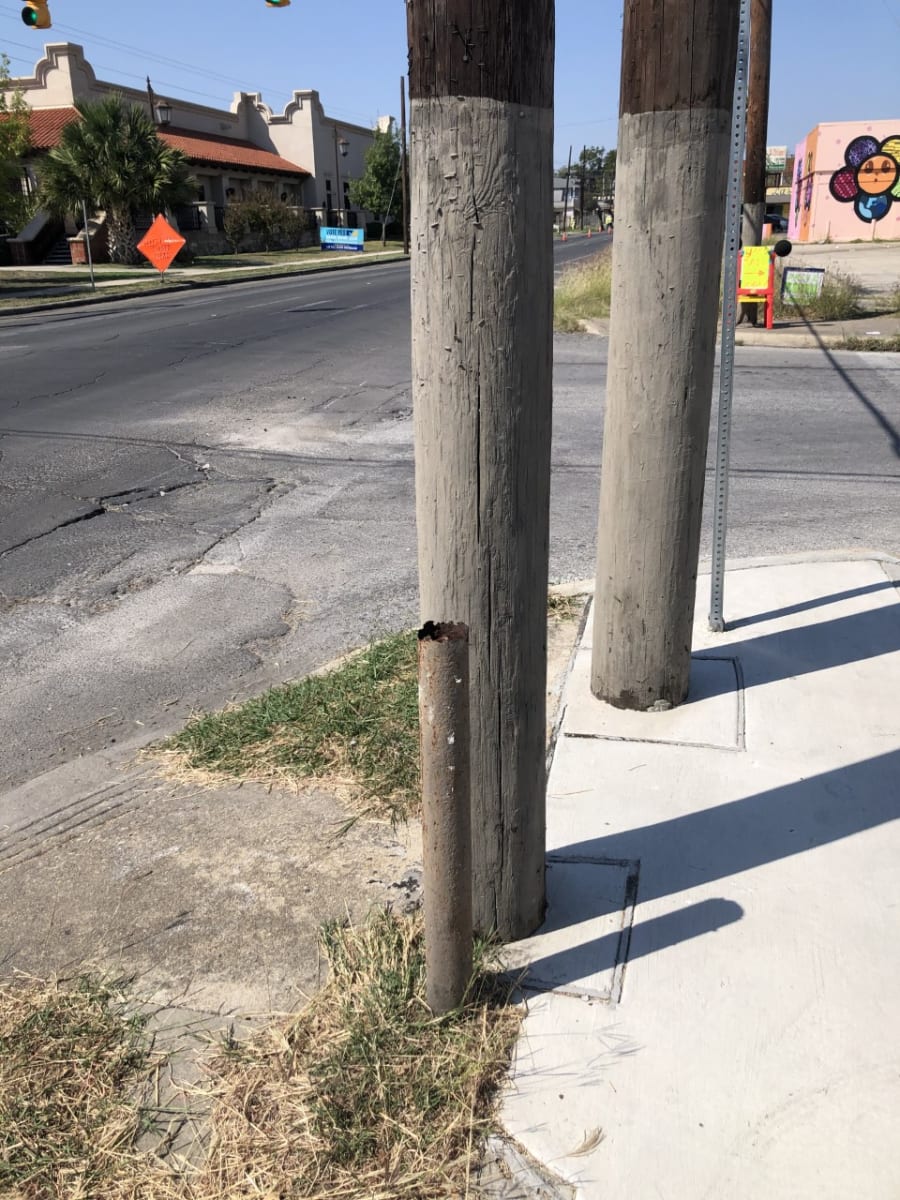SAN ANTONIO – This past August, the KSAT Defenders were contacted by viewer Steve Rico who had questions about some new wheelchair ramps that were being installed in his Southeast Side neighborhood.
”What bothered me was because they hadn’t fixed the street and they were spending all this money on all of these wheelchair ramps and they didn’t lead to nowhere,” Rico said.
That’s right — the new ramps didn’t connect to any sidewalks. It turns out the city has a good explanation but the project raised more questions: Is the city just checking off boxes to comply with Federal Disability Access requirements? And, what’s really being done to make San Antonio more accessible to people with disabilities?
Rico said he noticed the ramps being installed this summer near his home off Pecan Valley where the city was also repaving several residential streets, but there was no sign of new sidewalks being constructed as part of the project.

Before turning to the Defenders for answers, Rico said he first tried contacting city officials.
”No answers at all or anything. Nobody’s come talk to me and that’s why I figured I’d go to the Defenders and see if they could come up with one for us,” Rico said. “I mean, some of the ramps, the wheelchair ramp is here but there’s grass on both sides. So what’s the use of the wheelchair ramp?”
Rico said it’s a problem he and his neighbors have been dealing with for years.
”There’s never been sidewalks here. These wheelchair ramps have been replaced several times, but we’ve never seen sidewalks,” Rico said.
Paul Berry, a spokesman for the city’s Public Works Department, said he understood Rico’s concerns.
”Well, if I were to look at it without knowing what the situation was, I would think it would be a waste of money but it’s not. It’s there for a purpose,” Berry said. “So when the original developer of this neighborhood put in (the original ramps), I don’t know what he did it for. I don’t know why he decided not to put sidewalks along some of those streets. But that’s kind of what we’re dealing with right now.”
Berry said the new wheelchair ramps were installed this summer because the Americans with Disabilities Act (ADA) requires them any time a street is “altered”.
”ADA requires us to upgrade any ramps that are not ADA compliant or if there are places where there should be an ADA ramp and there’s not, we are to install one,” Berry explained.
In this case, they were included as part of the repaving project at a cost of $38,125. A small price to pay considering what could happen if the ramps weren’t installed.
”If we do not put these ramps where they should be or upgrade ramps that are not ADA compliant and get them to compliance, then we could face fines as a city operation and we certainly don’t want to do that,” Berry said.
The funding for the street repairs comes from one source and the money for sidewalks comes from another, so they’re installed at different times, often with years between projects.
While there’s no sidewalks there now, Berry said there are plans in place.
”They are scheduled to have sidewalks placed there on those streets within the next two years,” Berry said.
But according to information provided by the city, those sidewalks won’t be installed on Rico’s street and the funding hasn’t been approved. Which raises the question about those ramps to nowhere: are they really helping anyone with disabilities?
”I’m not going to get into that,” Berry said. “Our charge is to make our infrastructure compliant with ADA and that’s what we do.”
Jane Paccione is a local advocate for people with disabilities. While she doesn’t live in Steve Rico’s neighborhood, what she saw there bothered her.
”It’s like a bridge to nowhere. I can’t navigate this community. If I lived here, I couldn’t navigate it,” Paccione said. “It doesn’t do anything for me because I can’t go anywhere.”
While the city said the “ramps are beneficial” and can be used as “a traffic refuge for pedestrians with disabilities”, Jane disagreed.
”The only option in this neighborhood is riding in the street, regardless of what they’ve done here,” Paccione said. “When they’re done right, ramps benefit everybody: bikes, people pushing children in pushchairs or strollers. I mean, older adults who maybe aren’t steady on their feet need this type of accommodation to avoid falls.”
Jane said projects like this one are just one example of a larger problem in San Antonio.
”There’s so many more obstacles out there for even streets that have sidewalks. In my neighborhood I had a pole like this right in the middle of the sidewalk. It made it unusable for me,” Paccione said.
Several sidewalks around the city have obstacles like power poles, trees and mailboxes right in the middle that make it nearly impossible for someone like Jane to get around.
”Often they are not wide enough. I saw one the other day and I said, no way. I have a narrow chair, can you imagine someone in an electric wheelchair or scooter trying to navigate around a pole?” Paccione said.

Paul Berry said many of those obstacles are the result of decisions made decades ago.
”They didn’t go around those poles. They just went through them, essentially,” Berry said. “But that’s not a process today. Now we try to go around them with a smooth turn where it is ADA compliant.”
Berry said the city is committed to following the ADA and working with people in the disability community to find and address problems with the help of the city’s Disability Access Office (DAO).
”They look over every project, every plan that we do for every project, and they tell us if that would work and be compliant with ADA,” Berry said. “So we are committed to it and over the years, we’ve gotten better at it.”
The DAO is currently working on updating the city’s plans to improve pedestrian infrastructure like sidewalks and ramps. In a statement, Deb Scharven with the DAO said:
“The City’s Disability Access Office is currently working with the Public Works and Transportation Planning Departments to update the City’s Public Right-of-Way (ROW) Transition Plan. A Transition Plan is a document which guides the planning and implementation of necessary program and pedestrian infrastructure modifications over a period of time. Currently, we are working with Asset Management to review inventory data. We estimate the review should be completed in the early part of 2021. This data will include items such as how many Audible Pedestrian Signals (APS) are located in the City’s ROW. Once the inventory data review is completed, we will still need to conduct assessments to make sure all of our assets – sidewalks, curbs, ramps, signals, etc. – are in compliance with current ADA standards. The final inventory numbers will determine the project timeline. The DAO will also begin conducting public meetings (either virtually or live when it is safe to do so) to gather input from our community to determine what should take priority in each council district. These meetings are tentatively scheduled to begin March 2021. When all of the data, assessments and input is gathered the updated Transition Plan will be released.”
Jane Paccione said she hopes that leads to better decisions and eventually better mobility for all.
”San Antonio is a very caring community,” Paccione said. “We just need to make sure that issues like this that affect the quality of life of individuals with disabilities, that we push those forward.”
In the meantime, if you encounter an obstacle blocking a sidewalk, you can call 311 and they will help you make a report so someone can check it out.
RELATED: Texas Ramp Project helps provide freedom, mobility for San Antonio woman
